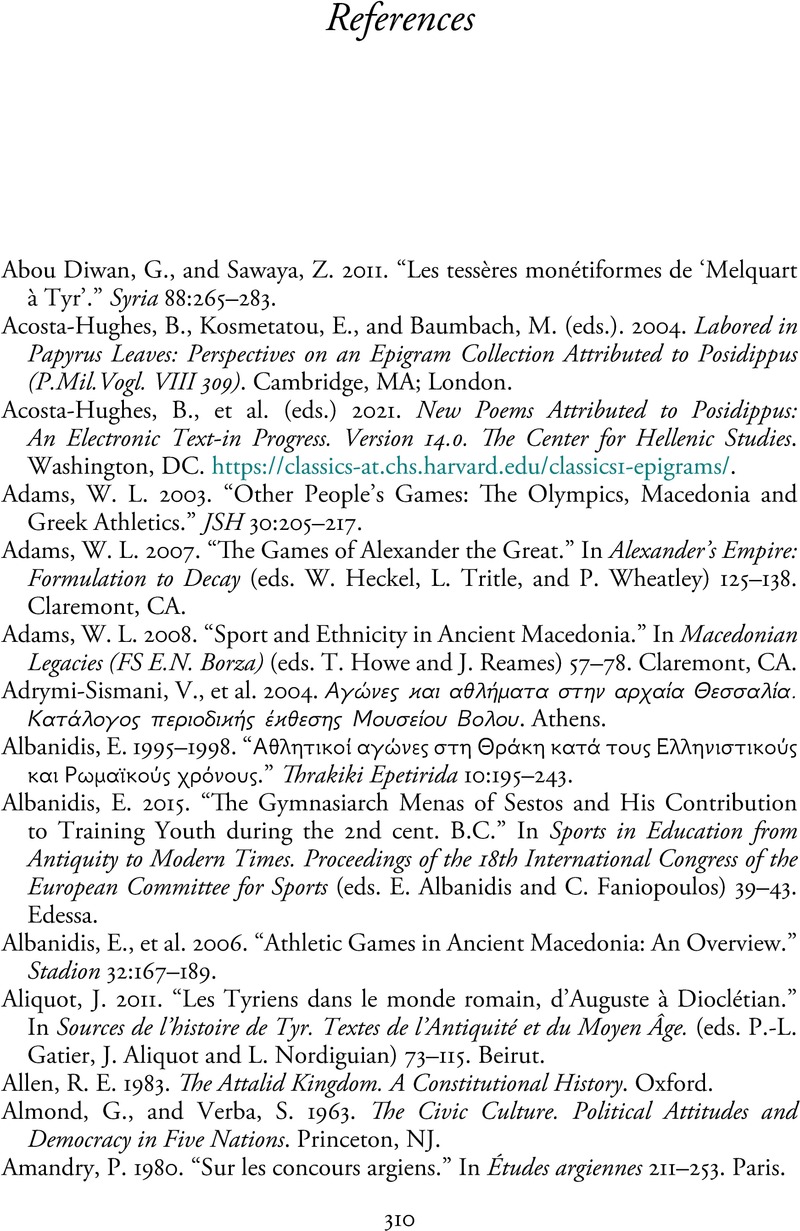Book contents
- Hellenistic Athletes
- Hellenistic Athletes
- Copyright page
- Contents
- Figures
- Maps
- Tables
- Preface
- Abbreviations
- Chapter 1 Introduction
- Chapter 2 What’s New in Hellenistic Athletics?
- Chapter 3 Athlete and Polis
- Chapter 4 Athlete and Koinon
- Chapter 5 Victorious Kings
- Chapter 6 Becoming Greek through Athletics
- Chapter 7 Conclusion
- References
- General Index
- References
References
Published online by Cambridge University Press: 16 March 2024
- Hellenistic Athletes
- Hellenistic Athletes
- Copyright page
- Contents
- Figures
- Maps
- Tables
- Preface
- Abbreviations
- Chapter 1 Introduction
- Chapter 2 What’s New in Hellenistic Athletics?
- Chapter 3 Athlete and Polis
- Chapter 4 Athlete and Koinon
- Chapter 5 Victorious Kings
- Chapter 6 Becoming Greek through Athletics
- Chapter 7 Conclusion
- References
- General Index
- References
Summary

- Type
- Chapter
- Information
- Hellenistic AthletesAgonistic Cultures and Self-Presentation, pp. 310 - 361Publisher: Cambridge University PressPrint publication year: 2024

